The S&TR now has two of these brilliant machines to cover the bulk of its freight workings.

The S&TR found the operation of its first (2-4-2+2-4-2) Garratt so economical, that it placed an order for a larger more powerful unit. In true railway workshop manner it has taken 15 months to complete it.
More story further down after the pics.....
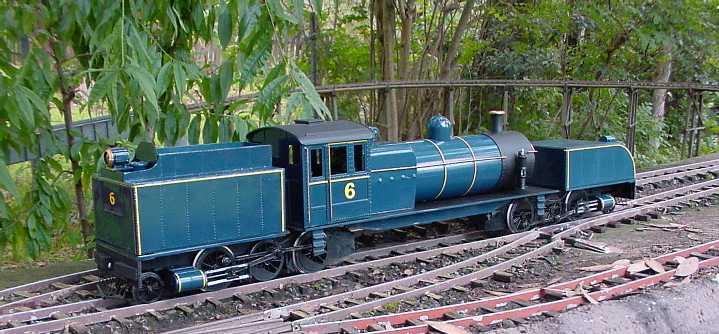
At Melaleuca on its first visit.
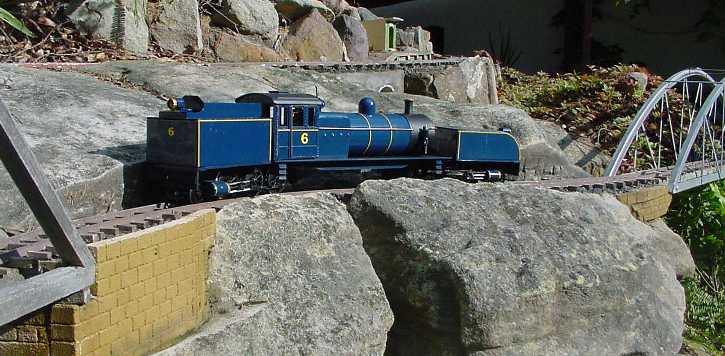
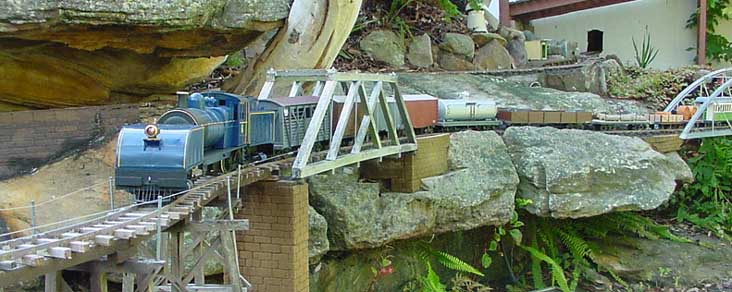
Inaugral steaming tests and its first revenue run up the 1:25
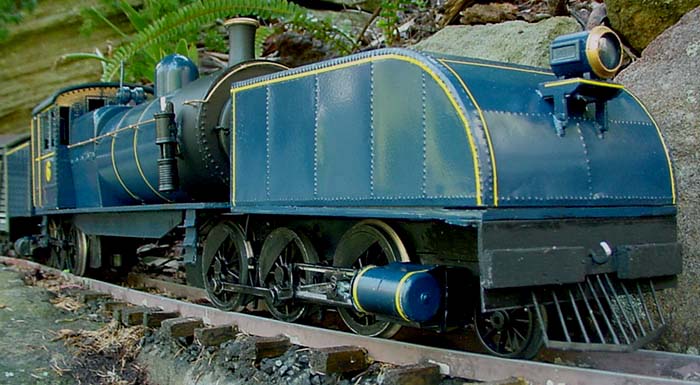
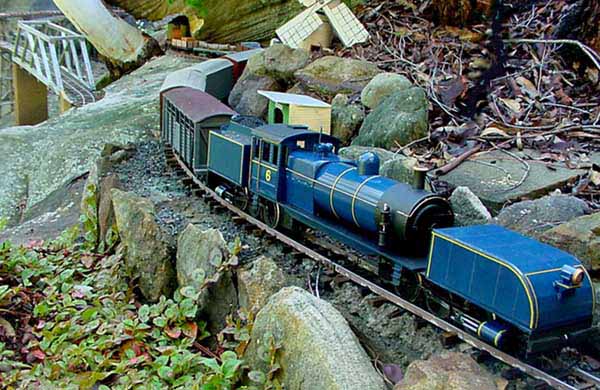
Ironbark is a favourite photographic spot. Here's a closeup of the first revenue run trying a start on the 1:25. Easy! The train of 11 wagons stretches way back into the 'cave' at the top centre of the right pic.

Both Garratts pose for the photographer at Melaleuca.
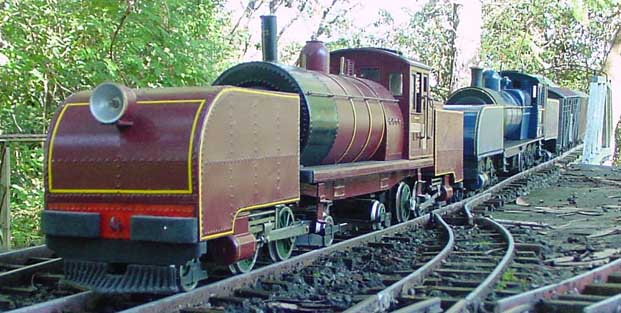
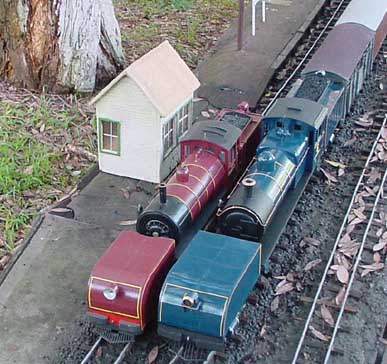
Superpower! Double Garratts pose. It will be a while before the S&TR has enough rollingstock to require this combination.
Construction Notes
The true story is that my original Bachmann 4-6-0, is now 8 years old and was having pickup problems. It seems that when the 'silver' (nickel?) coating wears off the wheels, there is nothing that can be done to get good pickup.
So with another 4-6-0 and it, I've created a 2-6-0 + 0-6-2 Garratt loosely based on the Victorian narrow gauge type, but with a 'curvy' front which I like. It is battery powered with a 7 Ah, 12V battery in the rear tank and the radio control and two sound systems in the boiler. Converting the 4-6-0 to a 2-6-0 means the cylinders had to be moved back and the drive rods shortened.
The cab is the original Bachmann with a styrene back wall. The 2 tanks are made from 1.5mm styrene sheet overlaid with 0.5mm sheet onto which the rivets are first embossed with a sharp point.
The boiler is made from 90mm dia plastic stormwater pipe. This is only about 1mm thick. (don't used the sewer pipe version which is much thicker.) I needed an 80mm boiler so I cut the pipe lengthways and then overlapped it to form the smaller dia. and screwed it together. It is not quite circular but not noticeable.
The dome is the top of a Rexona roll-on deodorant bottle and the funnel a piece of electrical conduit.
Radio control is made from a cheap ($19) model car (from Dick Smiths). This is only a 2 function unit unlike all my previous ones. The 2 controls are used for accelerate and brake. Reversing is accomplished by re-applying the brakes when stopped. Works quite well!
There is a 50mm dia speaker in the rear wall of the cab and another in the front tank facing down. The two sound systems are driven from the wheel cams on each unit are my own design.
I intend to add some more notes some day on how the 4-6-0 was converted to 2-6-0, with some pics.